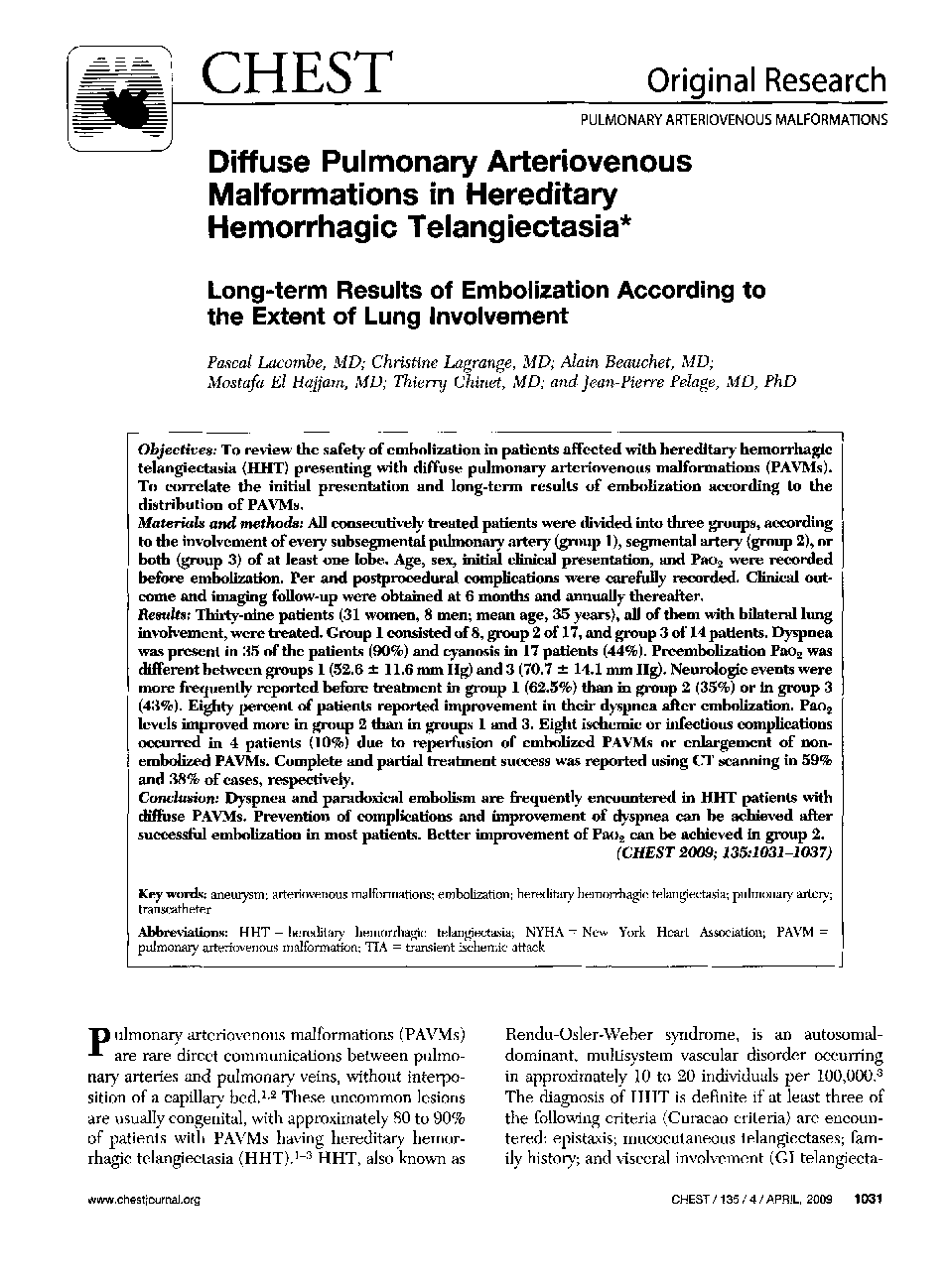| کد مقاله | کد نشریه | سال انتشار | مقاله انگلیسی | نسخه تمام متن |
|---|---|---|---|---|
| 2903630 | 1173395 | 2009 | 7 صفحه PDF | دانلود رایگان |

ObjectivesTo review the safety of embolization in patients affected with hereditary hemorrhagic telangiectasia (HHT) presenting with diffuse pulmonary arteriovenous malformations (PAVMs). To correlate the initial presentation and long-term results of embolization according to the distribution of PAVMs.Materials and methodsAll consecutively treated patients were divided into three groups, according to the involvement of every subsegmental pulmonary artery (group 1), segmental artery (group 2), or both (group 3) of at least one lobe. Age, sex, initial clinical presentation, and Pao2 were recorded before embolization. Per and postprocedural complications were carefully recorded. Clinical outcome and imaging follow-up were obtained at 6 months and annually thereafter.ResultsThirty-nine patients (31 women, 8 men; mean age, 35 years), all of them with bilateral lung involvement, were treated. Group 1 consisted of 8, group 2 of 17, and group 3 of 14 patients. Dyspnea was present in 35 of the patients (90%) and cyanosis in 17 patients (44%). Preembolization Pao2 was different between groups 1 (52.6 ± 11.6 mm Hg) and 3 (70.7 ± 14.1 mm Hg). Neurologic events were more frequently reported before treatment in group 1 (62.5%) than in group 2 (35%) or in group 3 (43%). Eighty percent of patients reported improvement in their dyspnea after embolization. Pao2 levels improved more in group 2 than in groups 1 and 3. Eight ischemic or infectious complications occurred in 4 patients (10%) due to reperfusion of embolized PAVMs or enlargement of non-embolized PAVMs. Complete and partial treatment success was reported using CT scanning in 59% and 38% of cases, respectively.ConclusionDyspnea and paradoxical embolism are frequently encountered in HHT patients with diffuse PAVMs. Prevention of complications and improvement of dyspnea can be achieved after successful embolization in most patients. Better improvement of Pao2 can be achieved in group 2.
Journal: Chest - Volume 135, Issue 4, April 2009, Pages 1031–1037